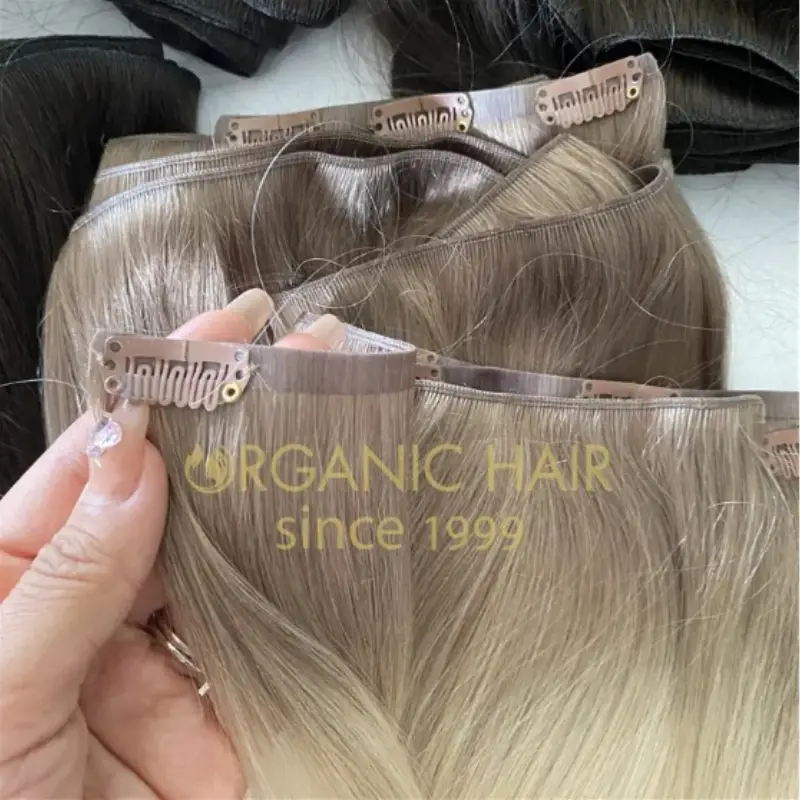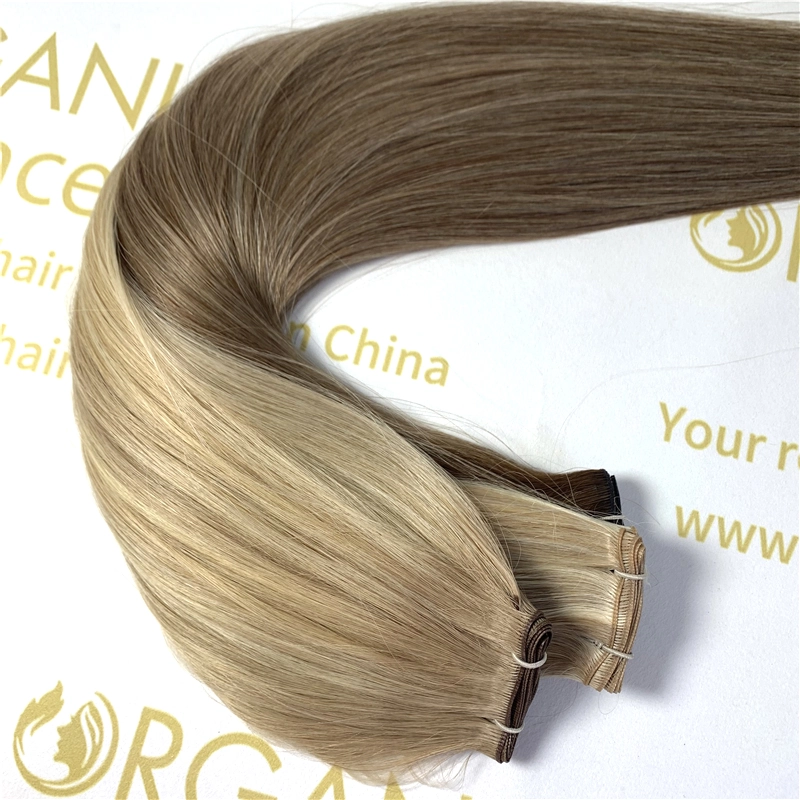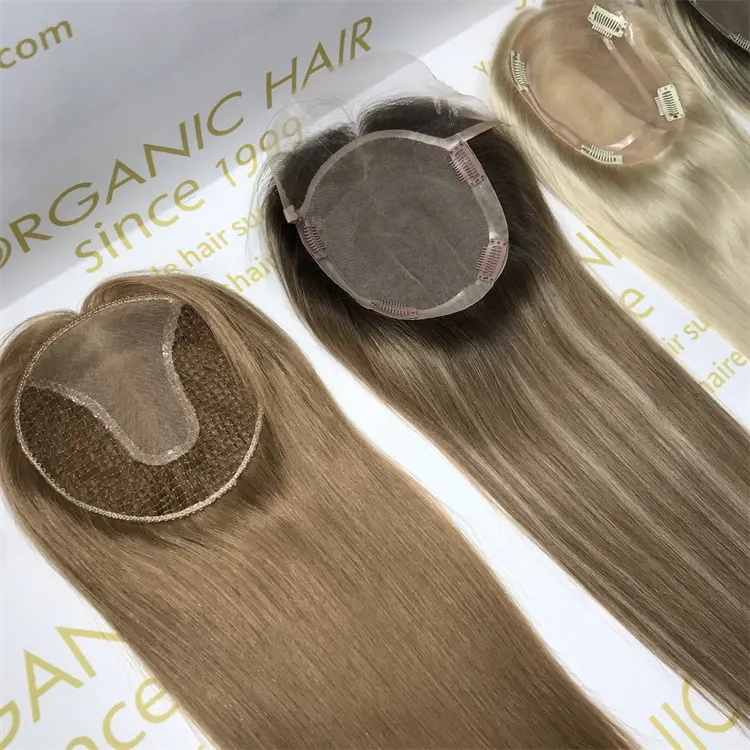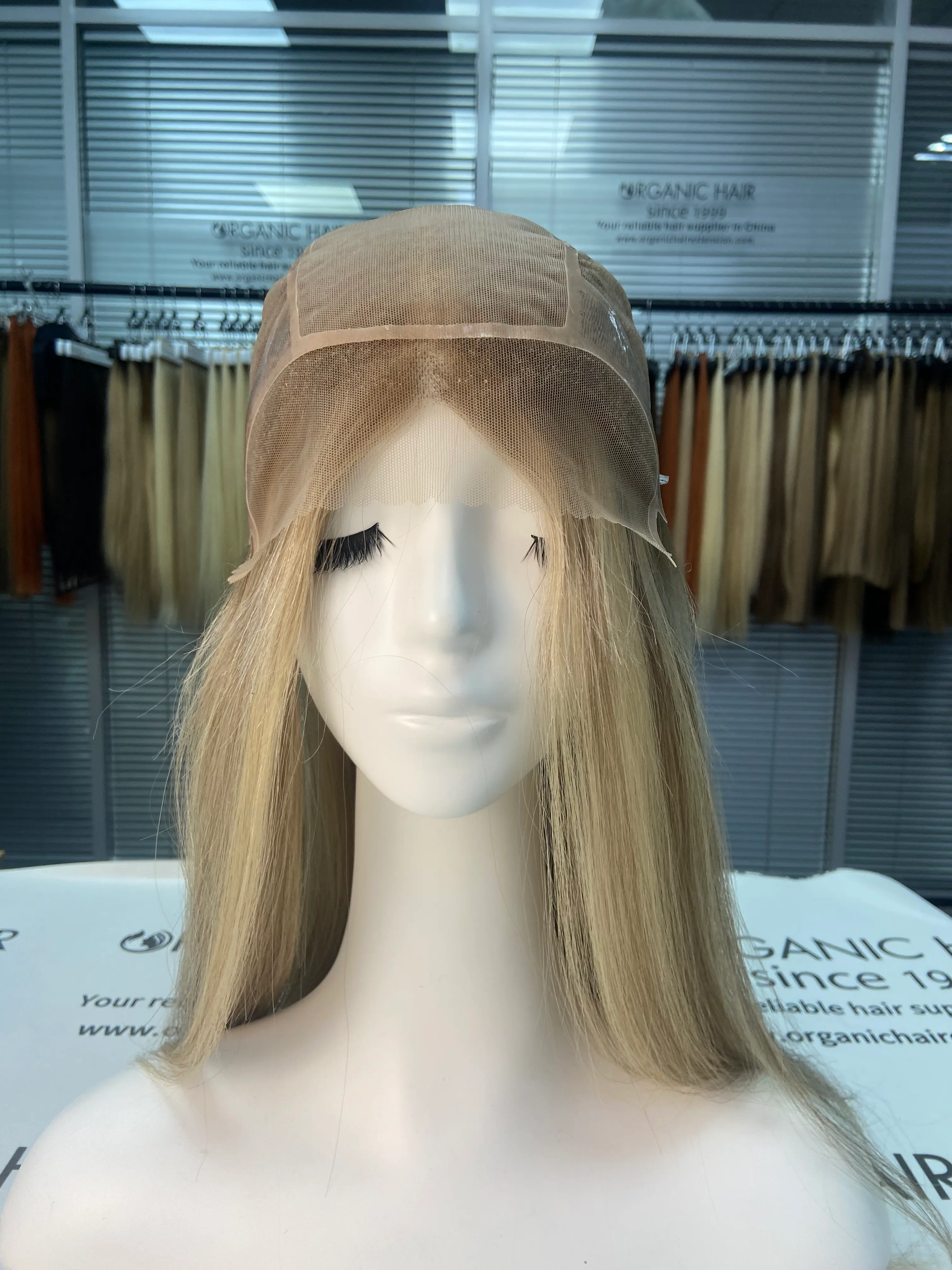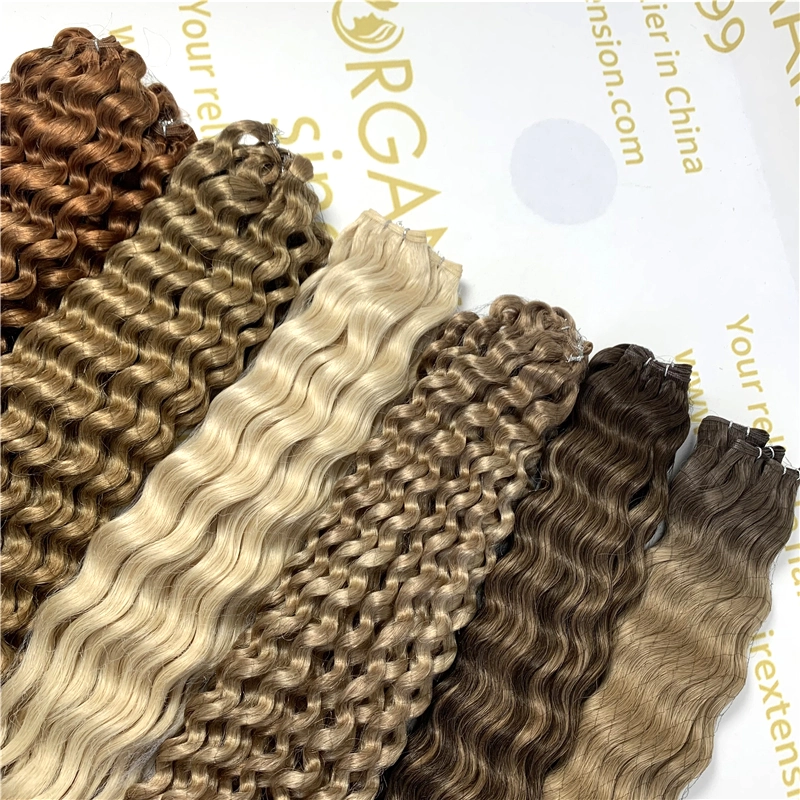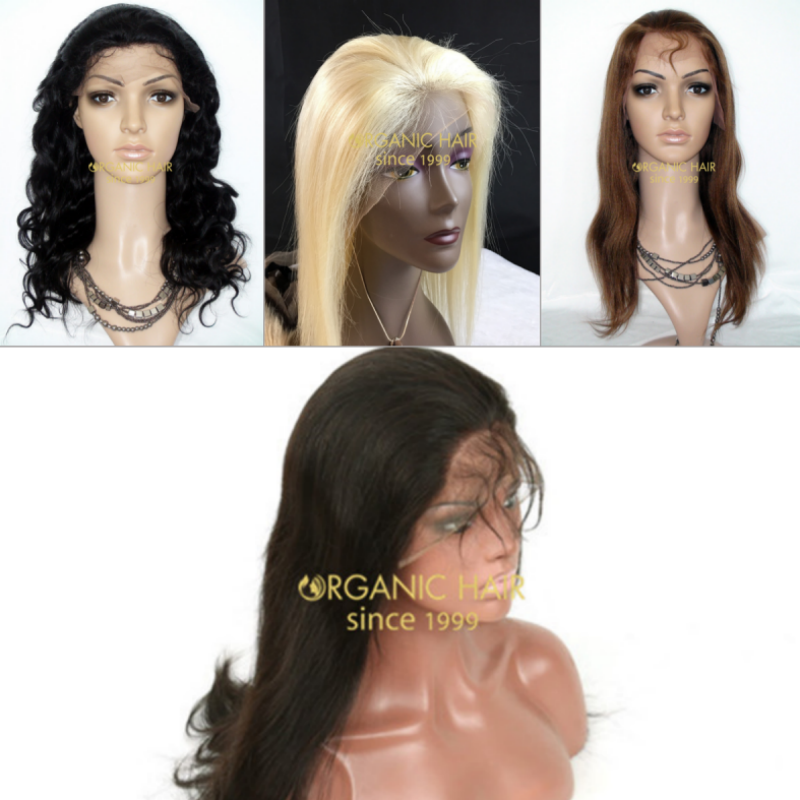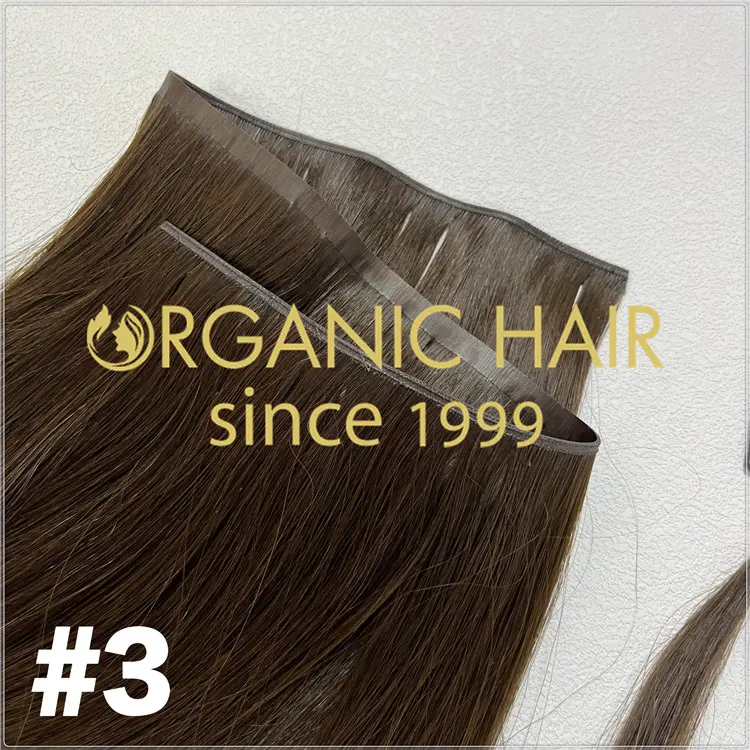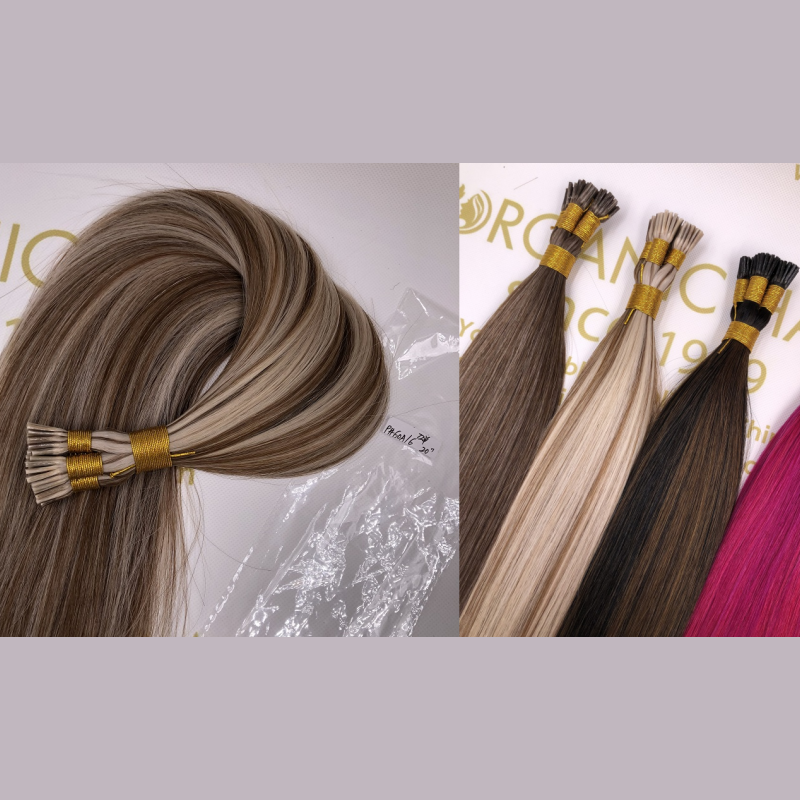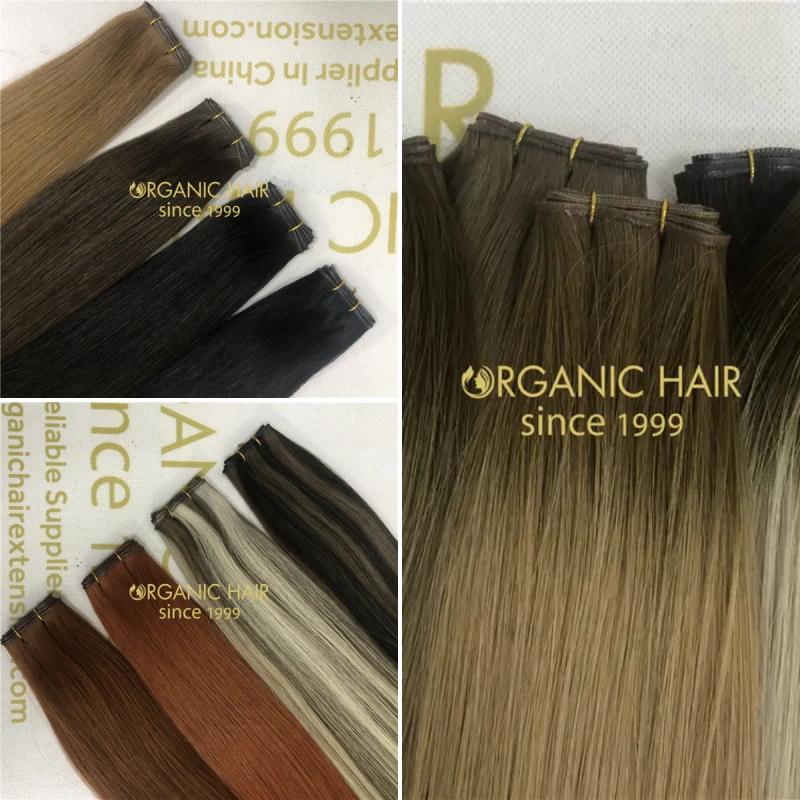Clip-in hair extensions are a popular and convenient way to instantly add length, volume, and fullness to your hair without the long-term commitment of permanent extensions. Made from either synthetic or human hair, these wefts come with small clips that easily attach to your natural hair, making them perfect for special occasions or everyday glam. Whether you're looking to experiment with a new look or enhance your current hairstyle, clip-ins offer flexibility and control—no salon visit required.
However, the key to making clip-in hair hair extensions look their best lies in how well they blend with your natural hair. Poorly blended extensions can look bulky, mismatched, or obvious, drawing unwanted attention and defeating the purpose of wearing them. Seamless blending ensures the extensions mimic the look, feel, and movement of your real hair, creating a flawless and undetectable finish. With the right techniques and tools, clip-ins can be virtually invisible—even to a trained eye.
This guide is ideal for anyone new to clip-in extensions or those who’ve struggled to get a natural result in the past. Whether you have thin, thick, curly, or straight hair, blending techniques can be adjusted to suit your specific hair type and style. It’s also helpful for hairstylists looking to refine their extension application skills, or beauty enthusiasts who want to elevate their hair game at home. No matter your experience level, this step-by-step guide will help you confidently wear clip-in extensions with ease and elegance.
Choosing the Right Clip-In Hair Extensions
Before you even begin blending clip-in extensions, selecting the right ones is crucial to achieving a seamless and natural look. The right color, texture, length, and quality can make all the difference in how well your hair extensions blend with your real hair.
Matching Hair Color and Texture
One of the most important factors in blending extensions is color match. Clip-in extensions come in a wide range of shades, including natural tones and highlighted or ombré styles. To get the best match, compare the extensions to the mid-lengths and ends of your hair, not the roots, since that’s where the extensions will sit. Many brands offer multi-tonal shades that mimic natural highlights and lowlights, which can help blend more easily if your hair has color variations.
Texture is just as important. If your hair is straight, curly, or wavy, choose extensions that match that pattern—or style both your hair and the extensions to match. Some companies offer texture-specific clip-ins, including options for natural, coily, or kinky hair types.
Selecting the Correct Length and Thickness
When choosing the length, consider both your natural hair length and the overall look you want. If you have short or blunt-cut hair, blending with long extensions can be tricky and may require layering or trimming. Ideally, choose a length that’s within 4–6 inches of your natural hair for the most natural blend.
Thickness also matters. If your natural hair is very thick, thin wefts will look stringy and unnatural. On the other hand, if your hair is fine, overly thick extensions can be heavy and hard to hide. Many brands offer different weight options (measured in grams), so select a set that complements your hair density.
Quality Matters: Synthetic vs. Human Hair
When it comes to realism and durability, human hair extensions are usually the better choice. They can be styled with heat tools, washed, and colored (in some cases), and they tend to blend more naturally. Synthetic extensions are more affordable and require less maintenance, but they usually have a shinier, less natural finish and limited styling options. If your goal is a flawless, long-lasting look, investing in 100% Remy human hair extensions is highly recommended—they align the cuticle in the same direction, reducing tangling and enhancing blendability.
Prepping Your Hair and Clip-In Hair Extensions
Proper preparation is key to ensuring that your clip-in hair extensions blend seamlessly with your natural hair. Clean, smooth, and well-styled hair creates the ideal base for applying extensions, while prepping the hair extensions themselves helps them look natural and last longer.
Washing and Conditioning Tips
While you don’t need to wash your clip-in hair extensions after every use, it’s a good idea to wash them before the first wear and then every 10–15 uses, or when they start to look dull. Use a sulfate-free, moisturizing shampoo and conditioner to keep them soft and manageable. Avoid heavy or oily products that can weigh the hair down or cause build-up. Your natural hair should also be freshly washed and conditioned, free of product residue, to help the clips hold better and prevent tangling.
Drying and Detangling
Always air dry your extensions whenever possible to prolong their life. If you must use a blow dryer, use a heat protectant and set the dryer to a low or cool temperature. Once dry, gently detangle both your natural hair and the extensions using a wide-tooth comb or a special extension brush, starting from the ends and working your way up to avoid breakage.
Straightening or Curling for Consistency
To create a uniform texture and ensure your extensions blend naturally, style them to match your hair. If your hair is straight, straighten the clip in hair extensions too. If you have waves or curls, use a curling iron or wand to style both your hair and the extensions together. Always apply a heat protectant before using any hot tools to maintain the health and appearance of the hair. Taking the time to align the textures will dramatically improve the final look.
Sectioning Your Hair Properly
The way you section your hair before applying clip-in hair extensions can make a huge difference in how natural and secure they look. Clean, even sections create a solid foundation for placement, ensure the clips stay hidden, and help the wefts blend seamlessly with your natural hair.
How to Divide Your Hair for Clip-In Placement
Start by brushing your hair to remove any tangles. Then, using a rat-tail comb or your fingers, create a horizontal part starting from one side of your head to the other—usually about an inch above the nape of your neck. Clip the rest of your hair up and out of the way. This bottom section is where your first weft will be applied.
Work your way up in layers, creating horizontal parts about an inch apart. The thicker your hair or the more volume you want, the more layers you’ll need. Typically, the back of the head holds the largest wefts, while the sides are for smaller ones. Finish with the topmost layer of your natural hair covering the final weft to fully conceal the clips.
Tips for Hidden and Secure Clips
To ensure the clips stay hidden, don’t place them too close to your hairline or part. Leave at least an inch of your natural hair around your face and parting area to act as a cover. Also, make sure the clips are flat against your scalp and evenly spaced to avoid any lumps or bumps.
Securing the clips close to the root of your hair will help them stay in place throughout the day. Press the clips open, anchor them onto the hair near the root, then snap them shut. Be careful not to tug or place them too tight, as that can cause discomfort.
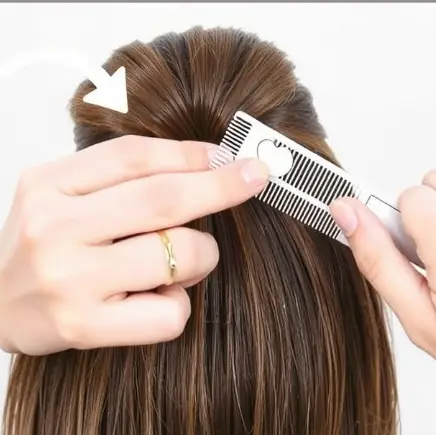
Backcombing or Teasing for Extra Grip (If Needed)
If you have silky or fine hair and find the clips slipping, gently backcombing the root area where you’ll attach the wefts can add grip. Use a fine-tooth comb to tease the section slightly, then spritz a little dry shampoo or texturizing spray. This creates a rougher surface for the clips to hold onto, making your clip in hair extensions more secure and long-lasting—especially helpful for all-day wear or events.
Clipping In the Extensions
Once your hair is properly sectioned, it’s time to start clipping in the hair extensions. This is the step where precision meets personalization. The goal is to place the wefts in a way that feels secure, looks natural, and enhances your hair’s overall shape and fullness.
Start from the Bottom and Work Your Way Up
Begin with the lowest section of your hair, just above the nape of your neck. This is where you’ll clip in your first (usually smallest) weft. Open the clips and secure them close to the root by snapping them shut against the scalp. Always start with the middle clip, then move outward to the side clips to ensure even placement and tension.
Continue letting down about an inch of hair at a time, working your way upward. With each new section, use slightly wider wefts, since the middle of the head can accommodate more volume. Reserve the largest wefts for this central area where your hair is thickest. The top sections and sides are more delicate and usually require smaller wefts for subtle volume and better concealment.
Positioning Clips for Volume and Balance
To achieve a natural and balanced look, space the wefts evenly across your head. Avoid placing too many on one side unless you're creating a side-swept style. Position the clips so that the added volume mirrors the natural fall and layers of your own hair. If you part your hair in the center or off to the side, place smaller wefts strategically around the crown and sides to maintain symmetry.
Blending Multiple Wefts for a Fuller Effect
Don’t be afraid to layer multiple wefts to create a more voluminous effect. Just make sure your natural hair can still cover the top weft to avoid exposure. If your hair is very thick, you might need to use more wefts to match the density. If it’s fine, fewer wefts will suffice. Focus on distributing the volume naturally from the roots to the ends, and avoid clumping too much hair in one area.
Once all wefts are in place, gently comb or finger-blend your natural hair over the clip in extensions. You’re now ready to move on to styling, which will complete the seamless transformation.
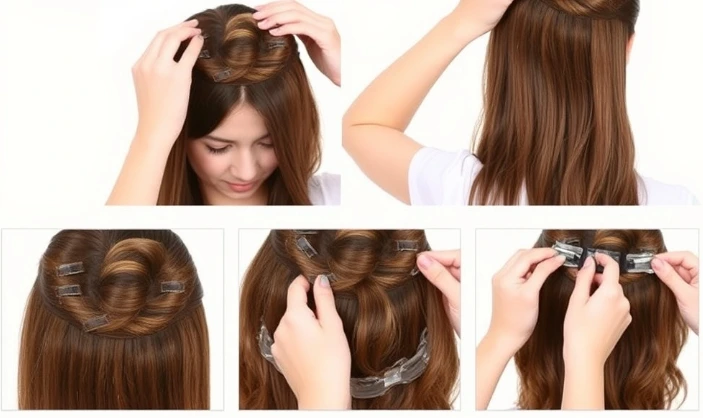
Blending Techniques
After clipping in your extensions, the final and most important step is blending. This ensures your natural hair and the extensions move as one, creating a flawless, undetectable finish. With a few key techniques, you can make even the most dramatic extensions look like your own hair.
Using Heat Tools (Curling or Straightening Together)
One of the easiest ways to blend extensions is to use heat styling. Whether you prefer straight or curled hair, styling your natural hair and extensions together helps unify their texture. Once the wefts are clipped in, go over your entire head with a curling wand, flat iron, or hot rollers—treating your hair and the extensions as one.
For straight styles, pass the flat iron through small, combined sections of your natural hair and the extensions. This fuses the textures together and smooths out any lines of separation. For curls or waves, choose a curling method that mirrors your natural pattern, and again, curl both hair types in the same section to blend them seamlessly.
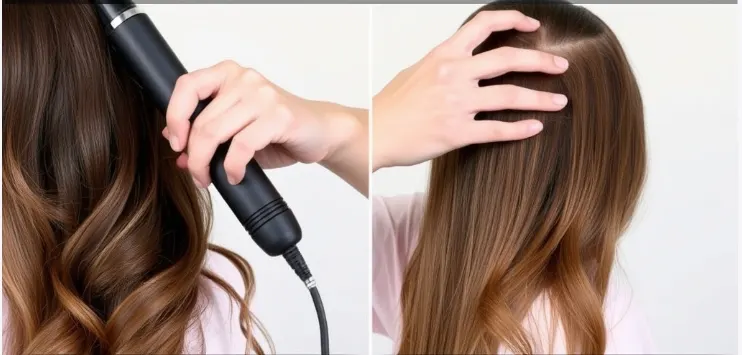
Trimming and Layering Extensions (Optional, but Effective)
If your clip in hair extensions are a different length or too blunt at the ends, they may stand out awkwardly. A simple trim or layering session can make a world of difference. It’s best to put the extensions in first, then trim them while wearing them to shape the hair naturally around your face and shoulders.
Light layering helps transition between your natural hair and the extensions, especially if you have shorter or choppy layers. For best results, use professional shears or visit a stylist for a custom blend.
Styling Tips: Braids, Waves, and Updos
Certain hairstyles are naturally better at disguising extensions. Loose waves, curls, and beachy textures work especially well because they add volume and soften the lines between your natural hair and the wefts. Simple braids or half-up styles can help mask any unevenness or visible clips. For updos, position your extensions lower on your head and pin them securely, using bobby pins and hairspray to lock everything in place.
You can also tuck in ends or twist pieces of hair around the base of ponytails or buns to hide extension edges. The key is to experiment with different styles that suit your hair type while concealing the points where your natural hair meets the extensions.
Common Mistakes to Avoid
Even high-quality clip-in extensions can look unnatural if they’re not applied correctly. Avoiding a few common mistakes can make a significant difference in achieving a smooth, believable look. From color mismatches to poor placement, here are the most frequent pitfalls to steer clear of when using clip-in hair extensions.
Mismatched Color or Texture
One of the most obvious giveaways that you're wearing extensions is a poor color or texture match. Your extensions should blend seamlessly with the mid-lengths and ends of your natural hair—not just the roots. Choosing a shade that’s too light, too dark, or too warm/cool can make your extensions stand out in an unflattering way. Many people have multidimensional hair, so opting for extensions with a mix of tones can help achieve a more natural look.
Texture matters just as much. If your hair is wavy or curly and your extensions are stick-straight, or vice versa, they will not blend well. Take the time to match your hair type or style both the extensions and your natural hair to a consistent finish using heat tools.
Overusing Too Many Wefts
More volume isn’t always better. Using too many wefts can weigh down your hair, create visible bumps, and make the extensions harder to hide. It can also feel uncomfortable over time. Instead of applying every weft in a set, focus on strategic placement that enhances your hairstyle without overloading your scalp. Select wefts based on your hair's natural density and the style you're aiming for—sometimes less truly is more.
Clipping Too Close to the Hairline
Placing extensions too close to your hairline or part is a common mistake that can easily ruin the illusion. When clips are visible or poorly concealed, they make the extensions look fake and out of place. Always leave at least one inch of natural hair around the perimeter of your head to act as a buffer. This “cover layer” helps to conceal the wefts and create a more natural transition between your own hair and the extensions.
Additionally, avoid placing wefts too high on the crown, where the hair is usually thinner and more difficult to cover. Stick to the mid and lower sections for a more discreet, balanced finish.
Maintenance Tips
Taking care of your clip-in hair extensions properly is essential to keeping them looking fresh, soft, and natural for as long as possible. With the right maintenance routine, high-quality extensions can last for months—or even years. Below are the key tips for storing, cleaning, and caring for your extensions to protect your investment and ensure they always look their best.
How to Store Extensions
Proper storage prevents tangling, matting, and damage between uses. After removing your clip-ins, gently brush them to remove any knots or product buildup. Always store them in a dry, cool place away from direct sunlight.
You can lay them flat in a satin or silk-lined storage bag, use a dedicated extension hanger, or coil them loosely and place them in a sealed container or box. Avoid tossing them into drawers or leaving them exposed to dust and air, as this can dry them out and shorten their lifespan.
Cleaning and Care Instructions
Clip-in extensions don’t need to be washed as often as your natural hair. Generally, wash them after every 10–15 wears, or when they have product buildup or an oily appearance. Use a gentle, sulfate-free shampoo and follow with a hydrating conditioner. Always wash them in a downward motion, holding the weft firmly to avoid tangling.
Rinse with cool or lukewarm water and let them air dry on a clean towel. Avoid rubbing or wringing them out. If you're in a hurry and need to blow dry, use a low-heat setting and apply a heat protectant beforehand.
Also, avoid using heavy oils or alcohol-based products, which can either weigh the hair down or dry it out. A lightweight leave-in conditioner or serum can help maintain softness and shine.
Lifespan of Clip-In Extensions
The lifespan of your clip-in hair extensions depends largely on how well you care for them and the quality of the hair. Synthetic extensions typically last 2–3 months with light use, while high-quality human hair extensions—especially 100% Remy hair—can last 6 months to a year or more with proper maintenance.
The more you wash, heat style, or chemically treat them, the shorter their lifespan will be. Treat them gently, minimize exposure to heat, and follow a consistent care routine to keep them looking healthy and beautiful for as long as possible.
Conclusion
Blending clip-in hair extensions seamlessly comes down to a few key steps: choosing the right color and texture, prepping both your hair and the extensions, sectioning properly, and applying with care. Styling with heat tools, layering for shape, and using strategic placement all contribute to a flawless, natural finish.
Like any styling technique, blending extensions takes a bit of practice. Don’t be discouraged if your first try isn’t perfect—experiment with different weft placements, styling methods, and tools until you find what works best for your hair type and desired look.
With patience and proper technique, clip-in extensions can become a powerful tool in your beauty routine—giving you instant length, volume, and confidence. When done right, no one will be able to tell you’re wearing them. Just a little effort goes a long way in achieving a smooth, beautiful, and totally natural transformation.
